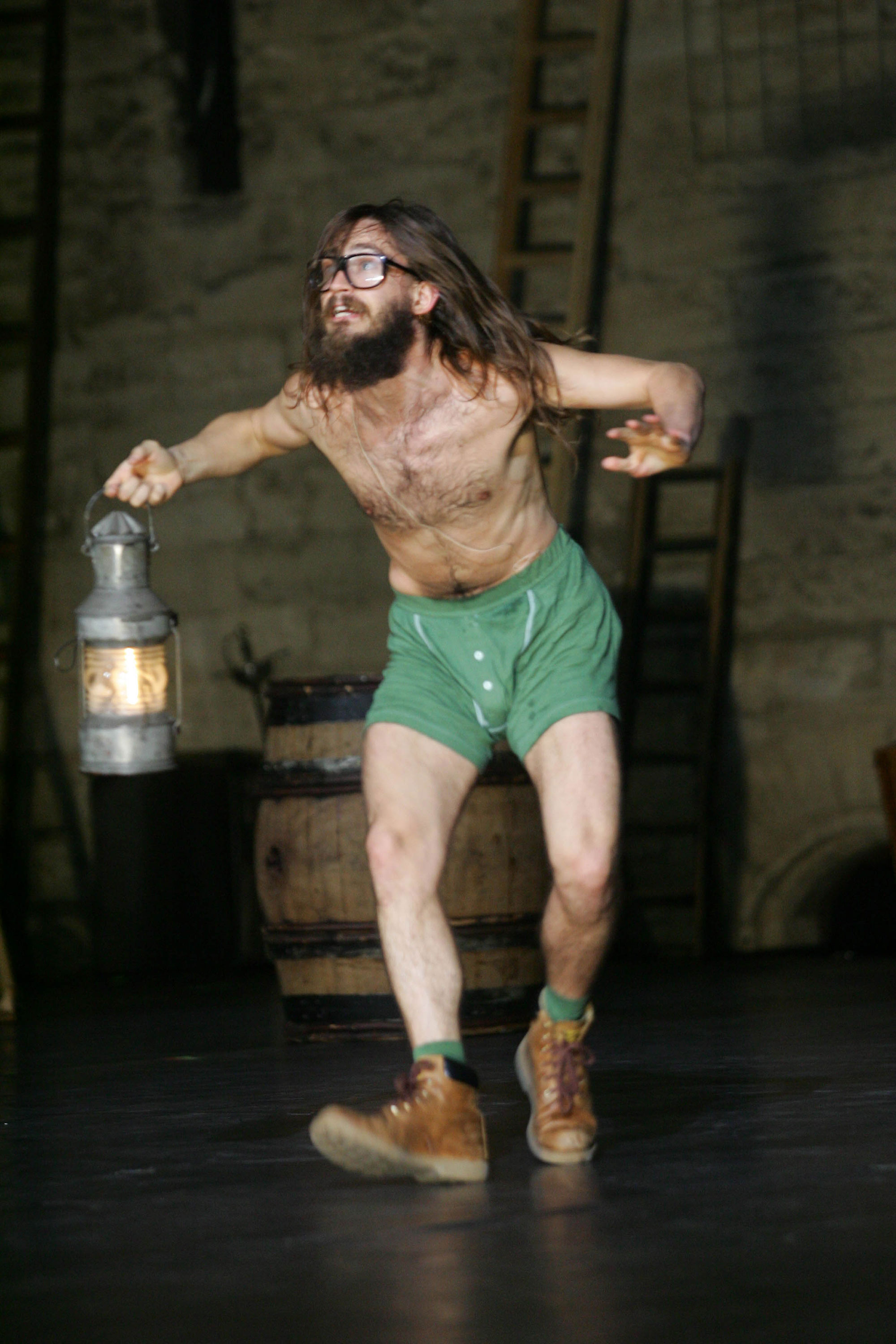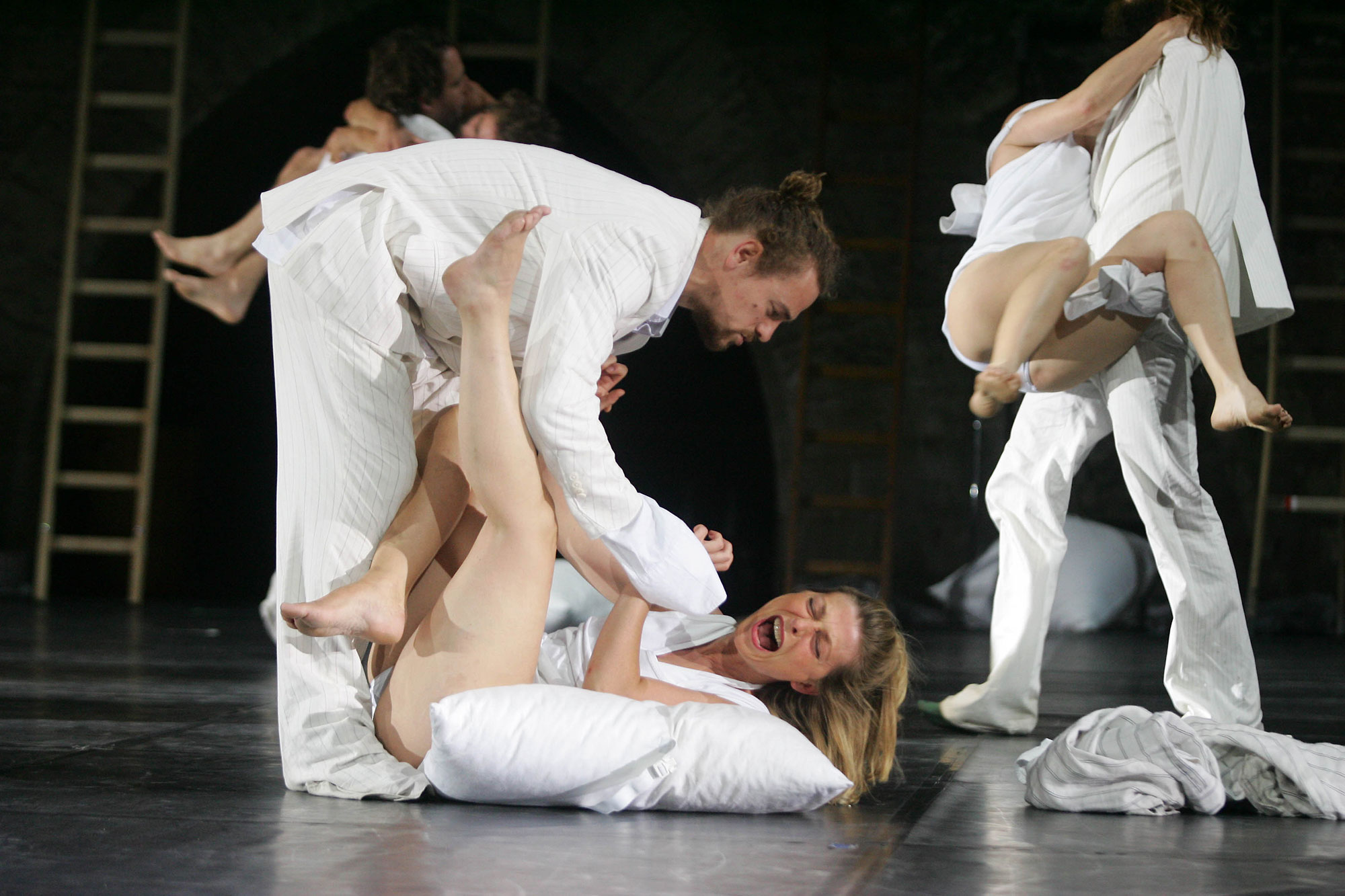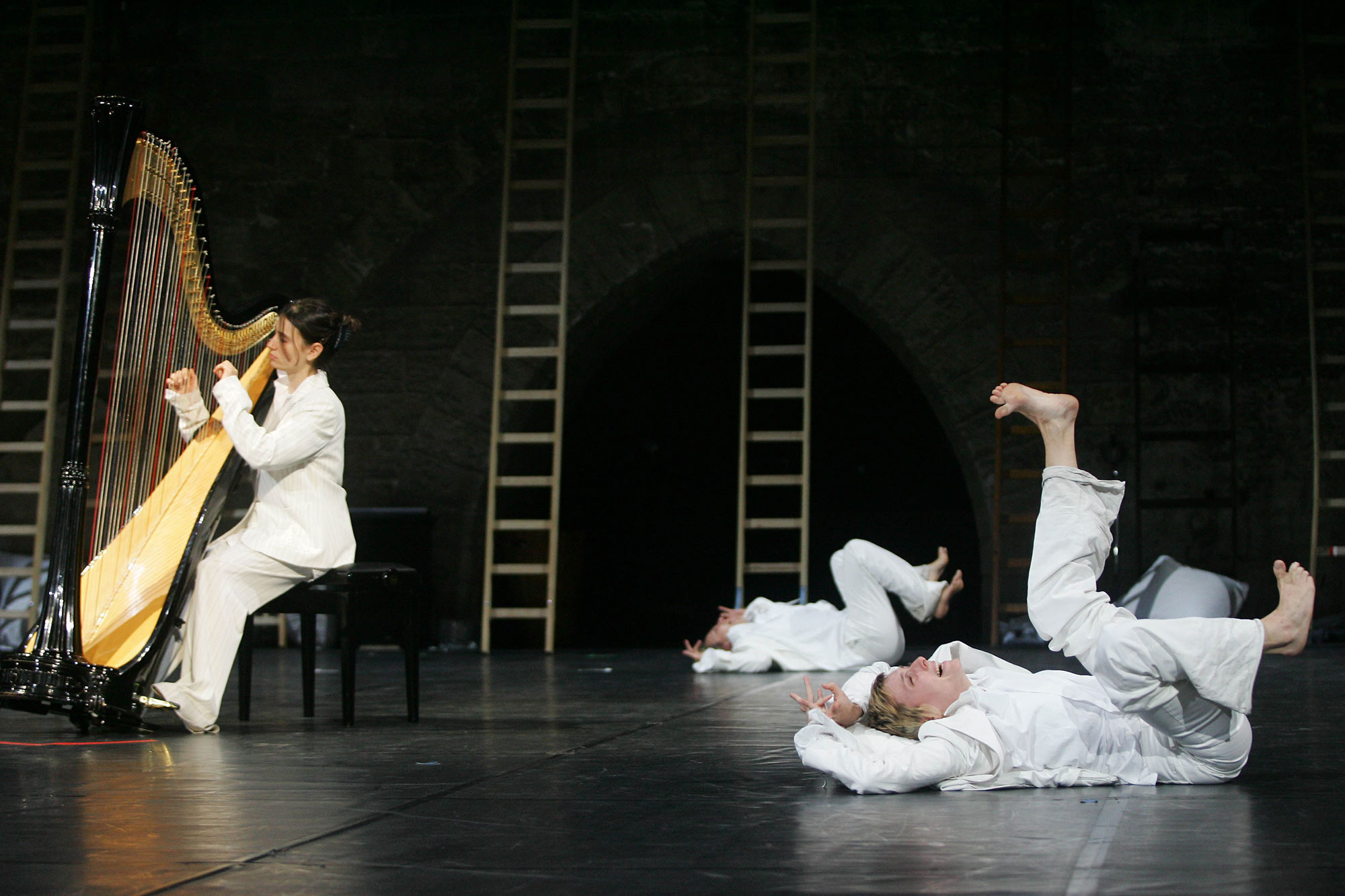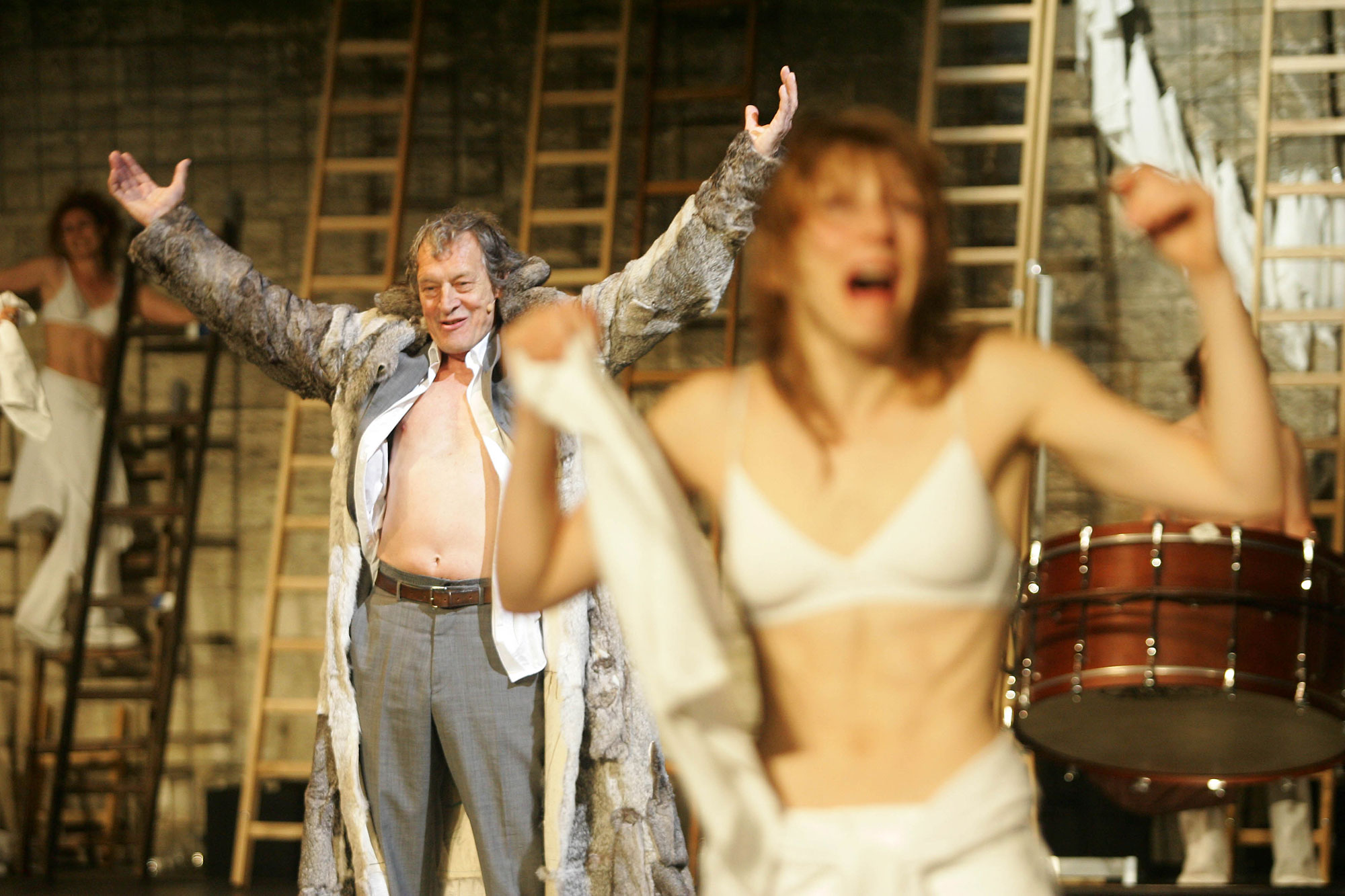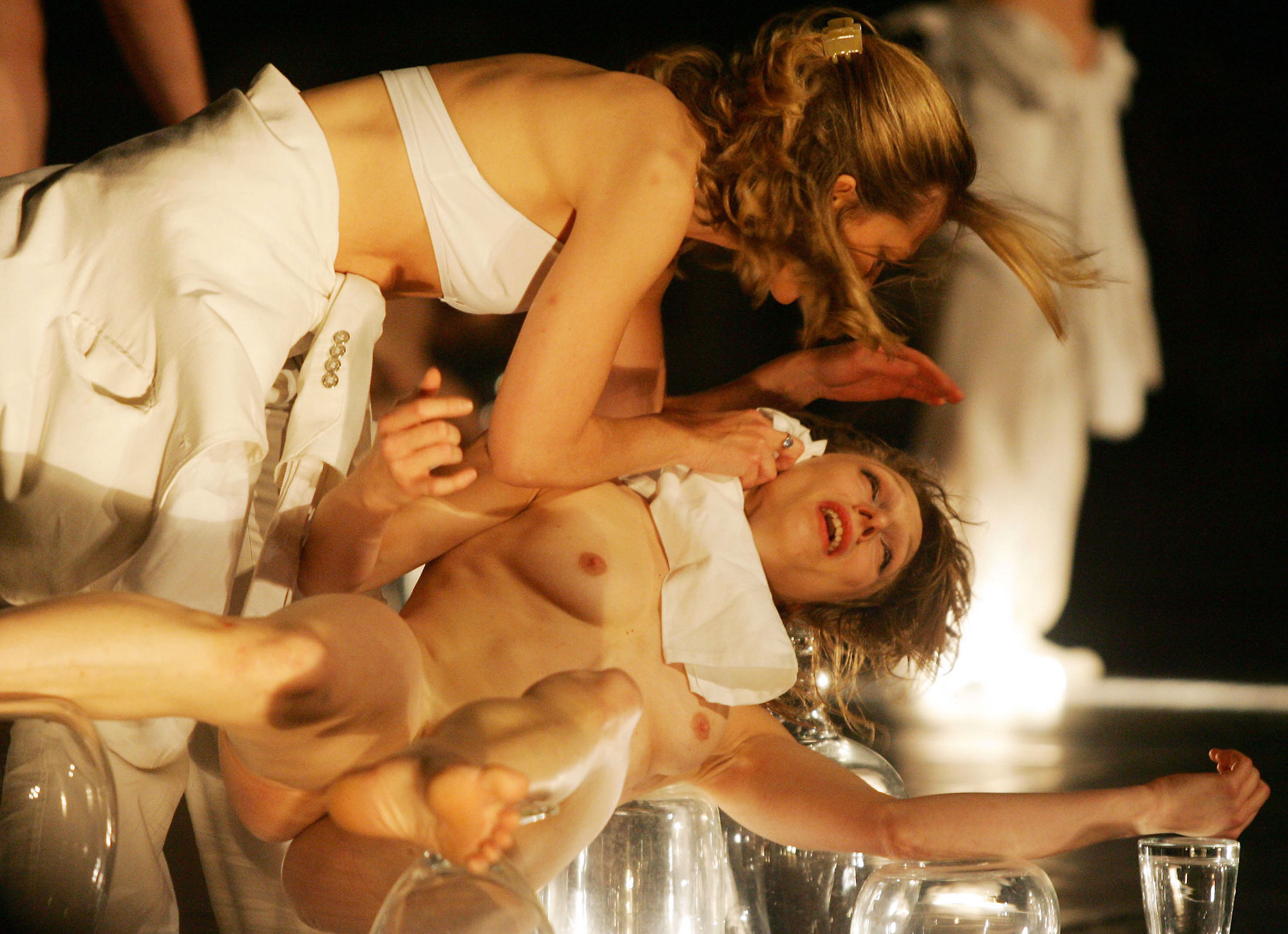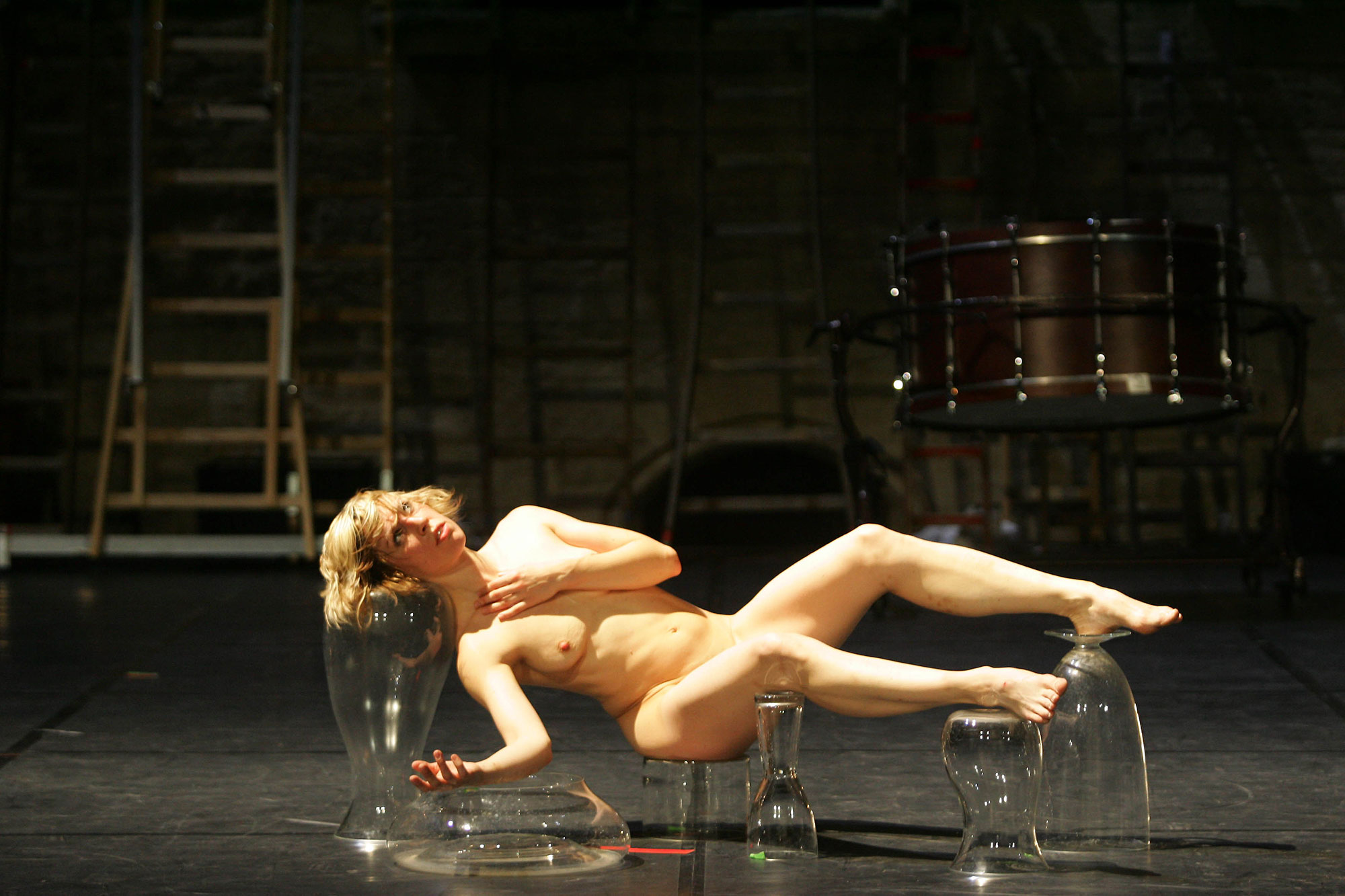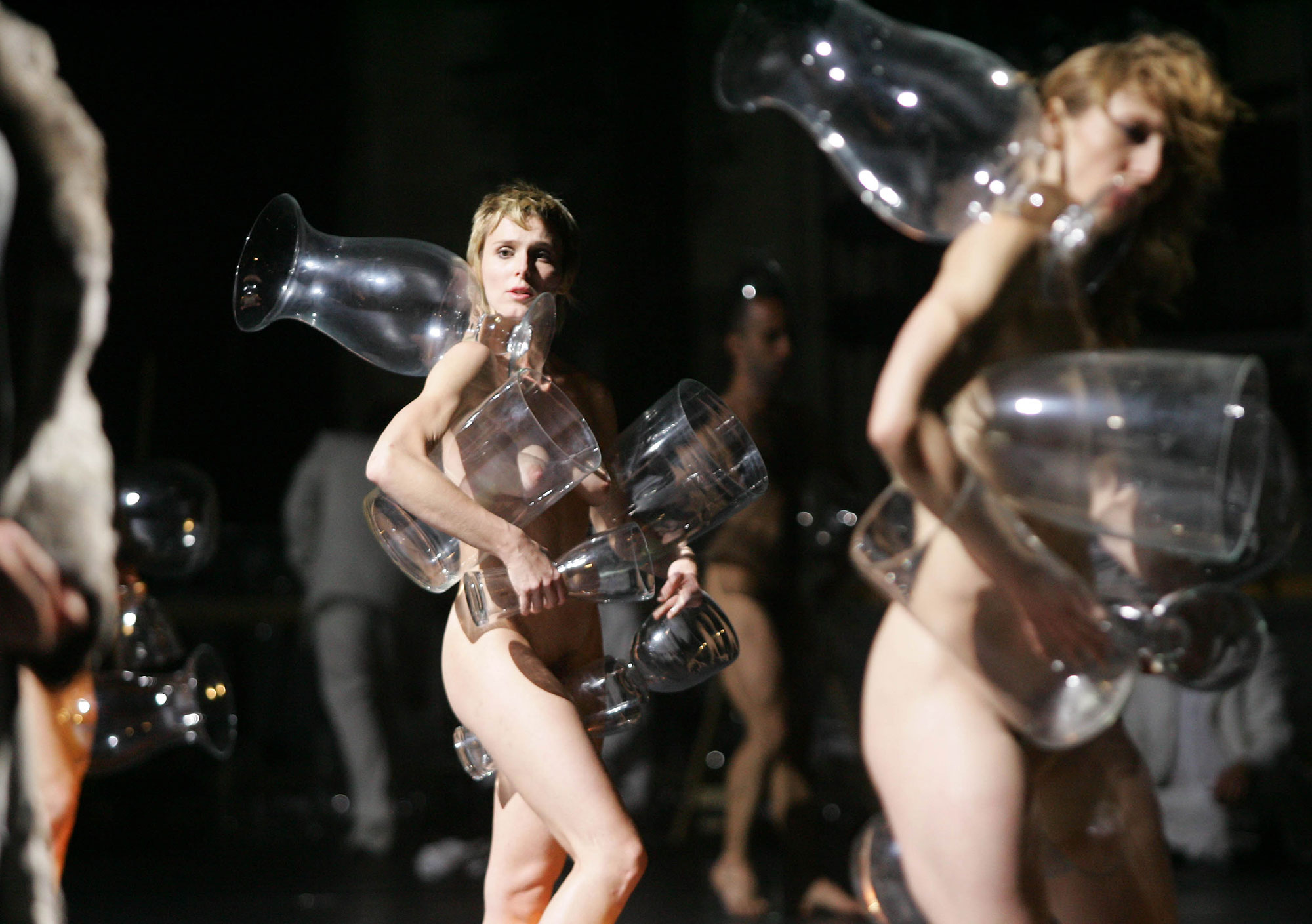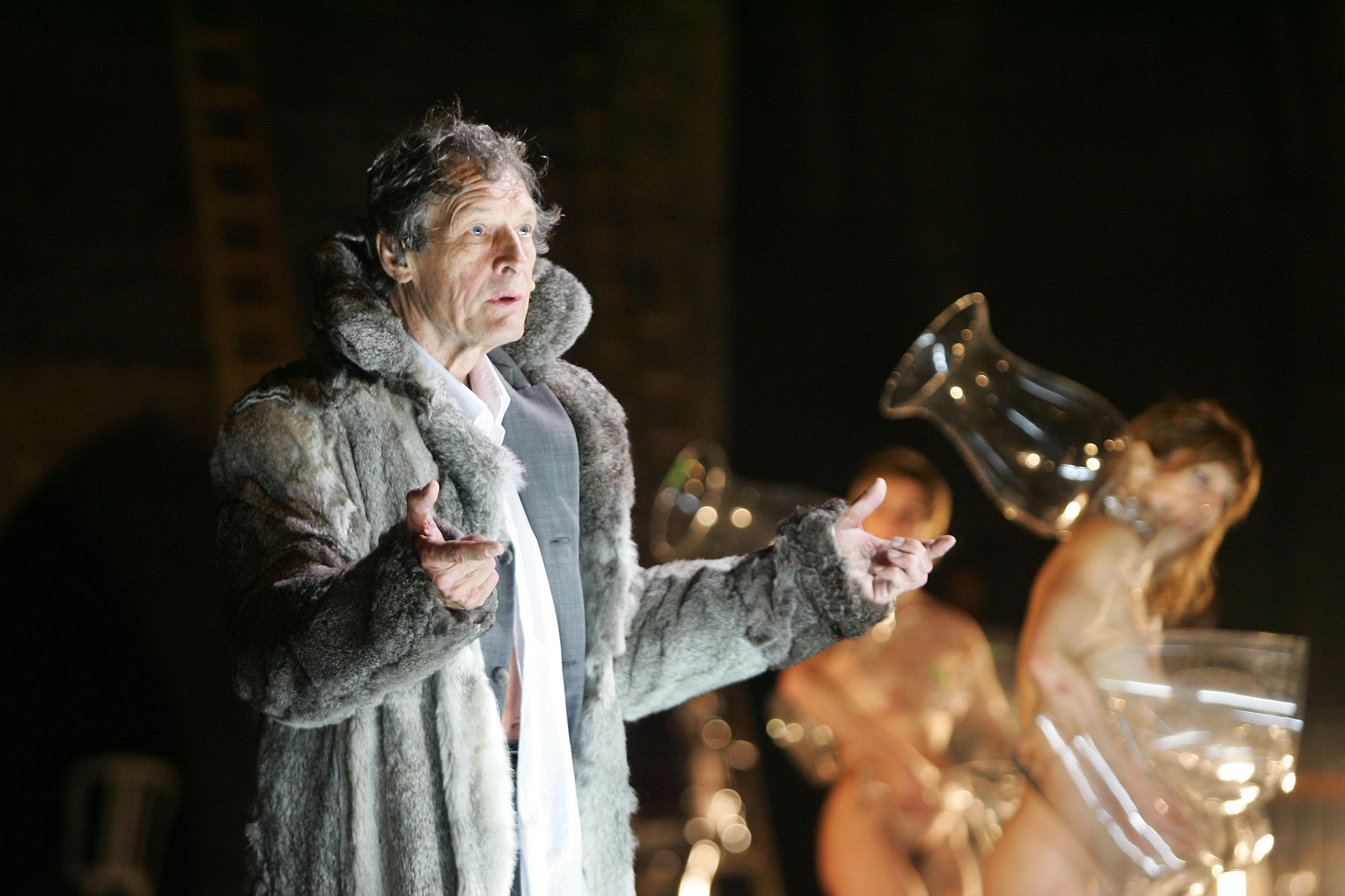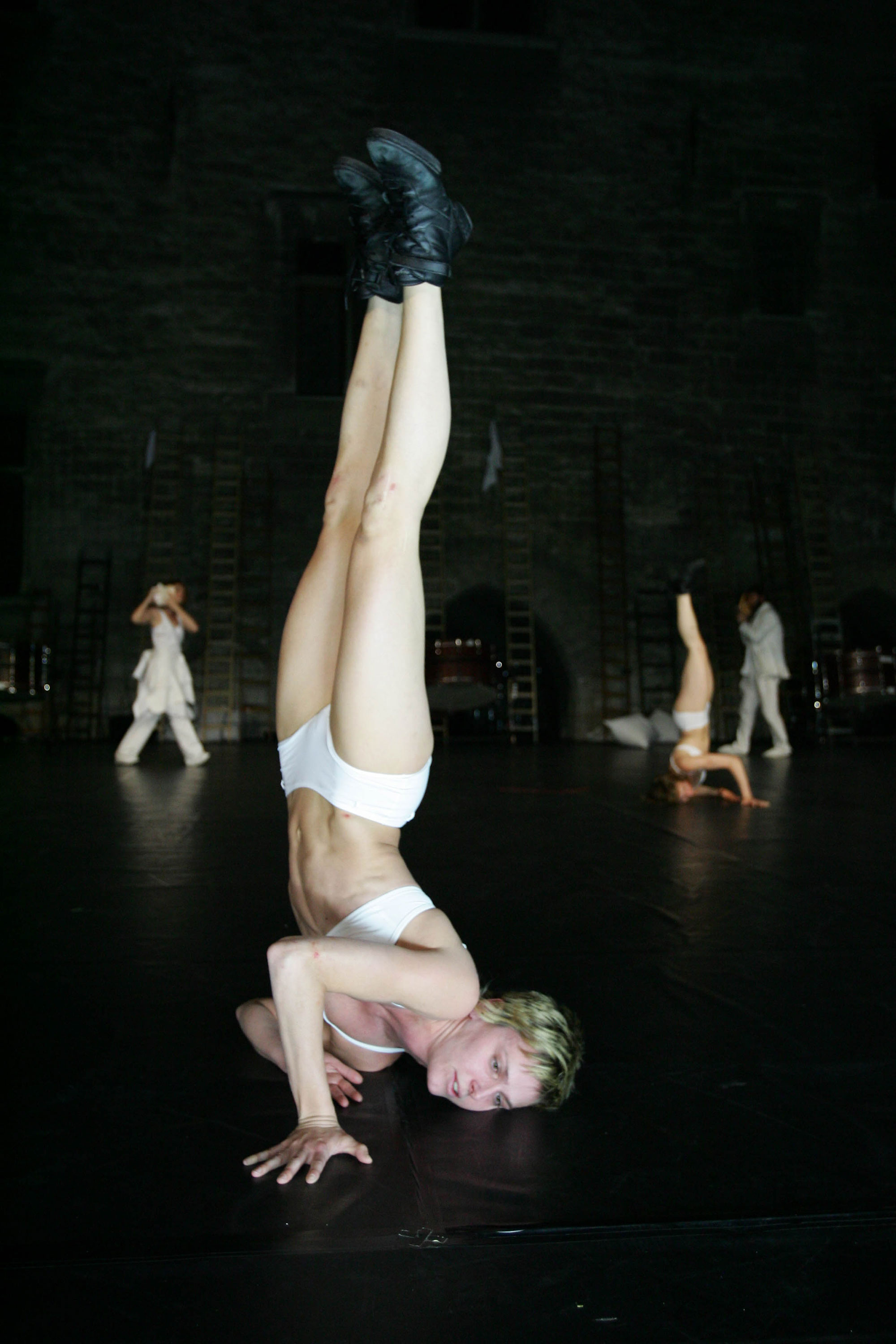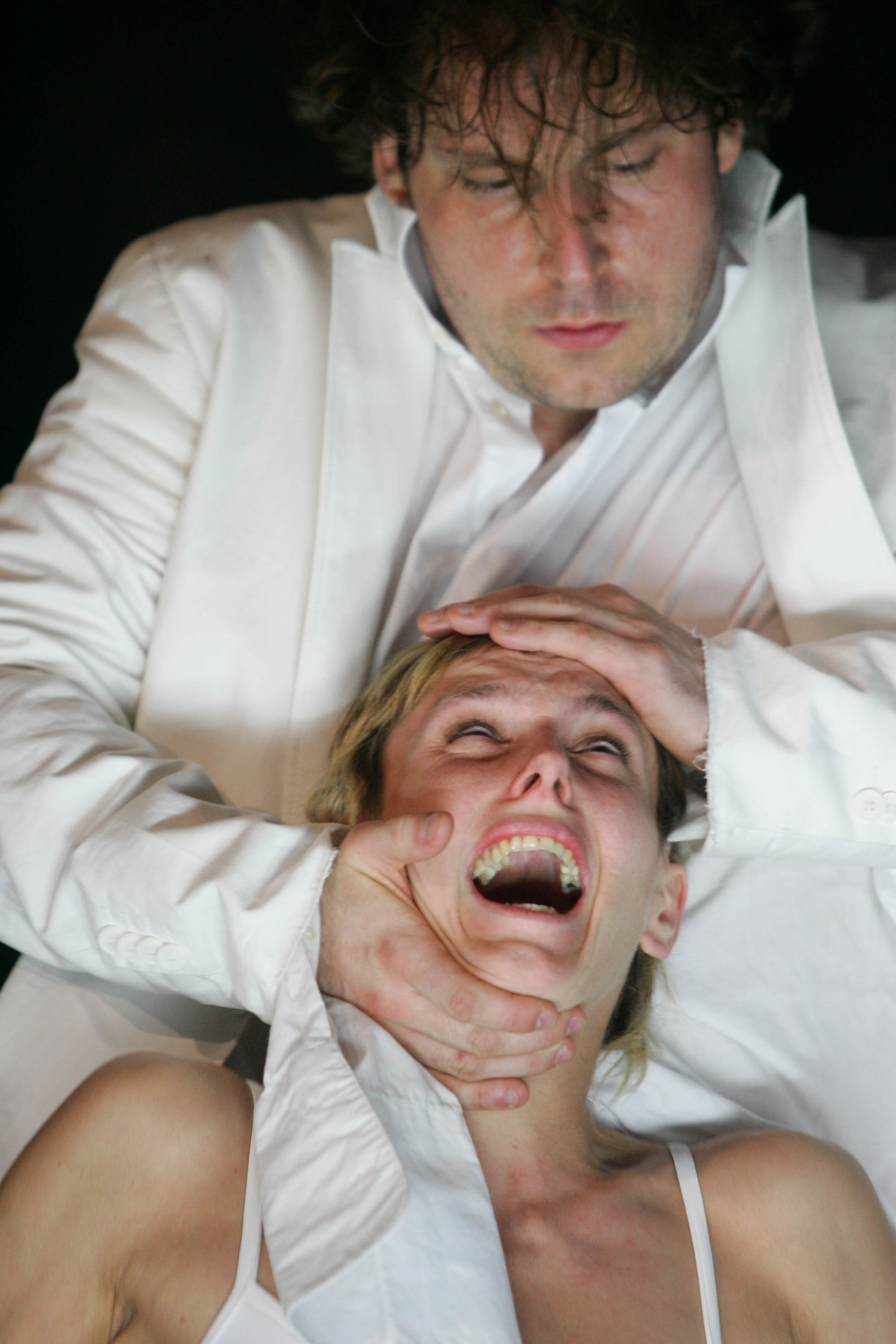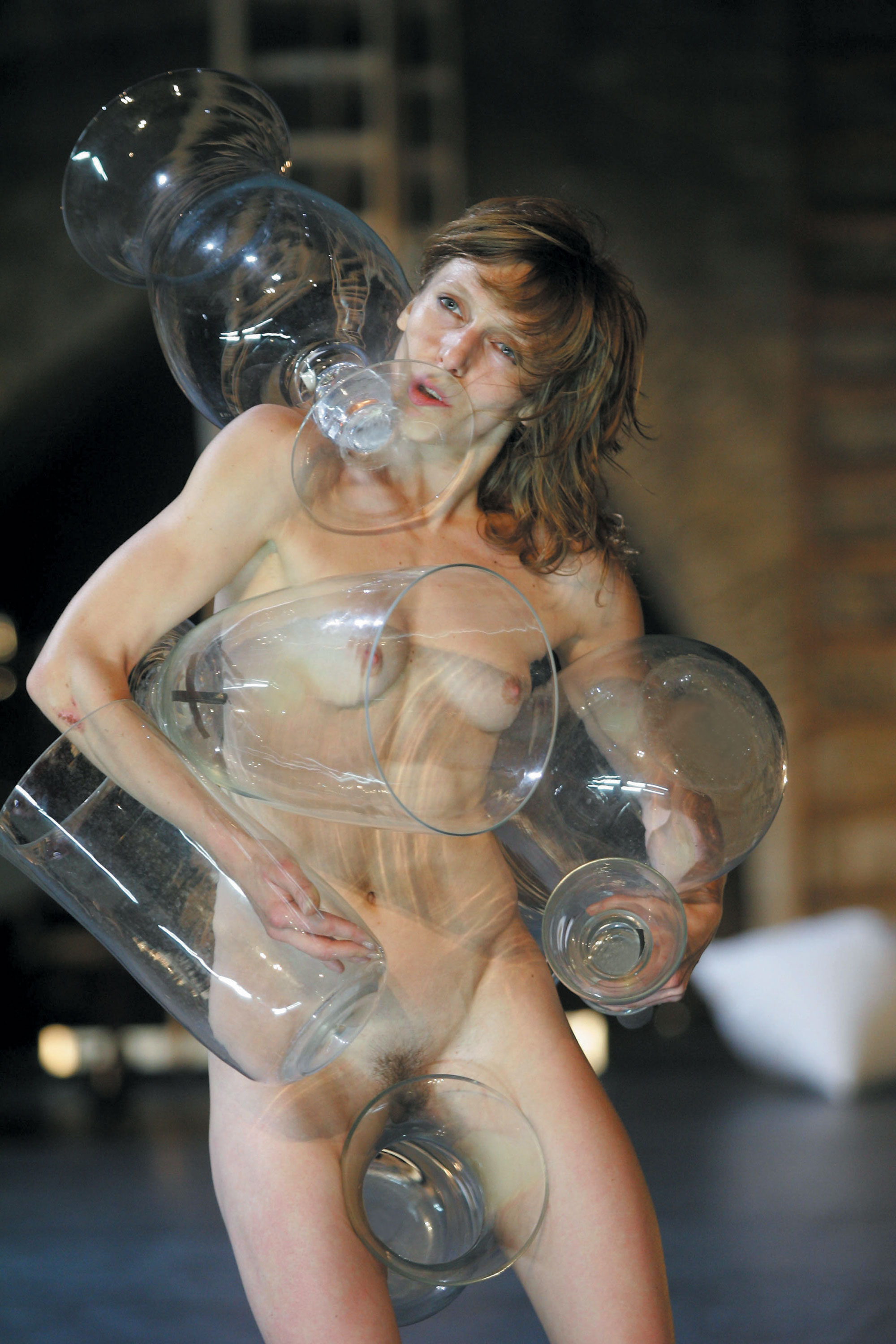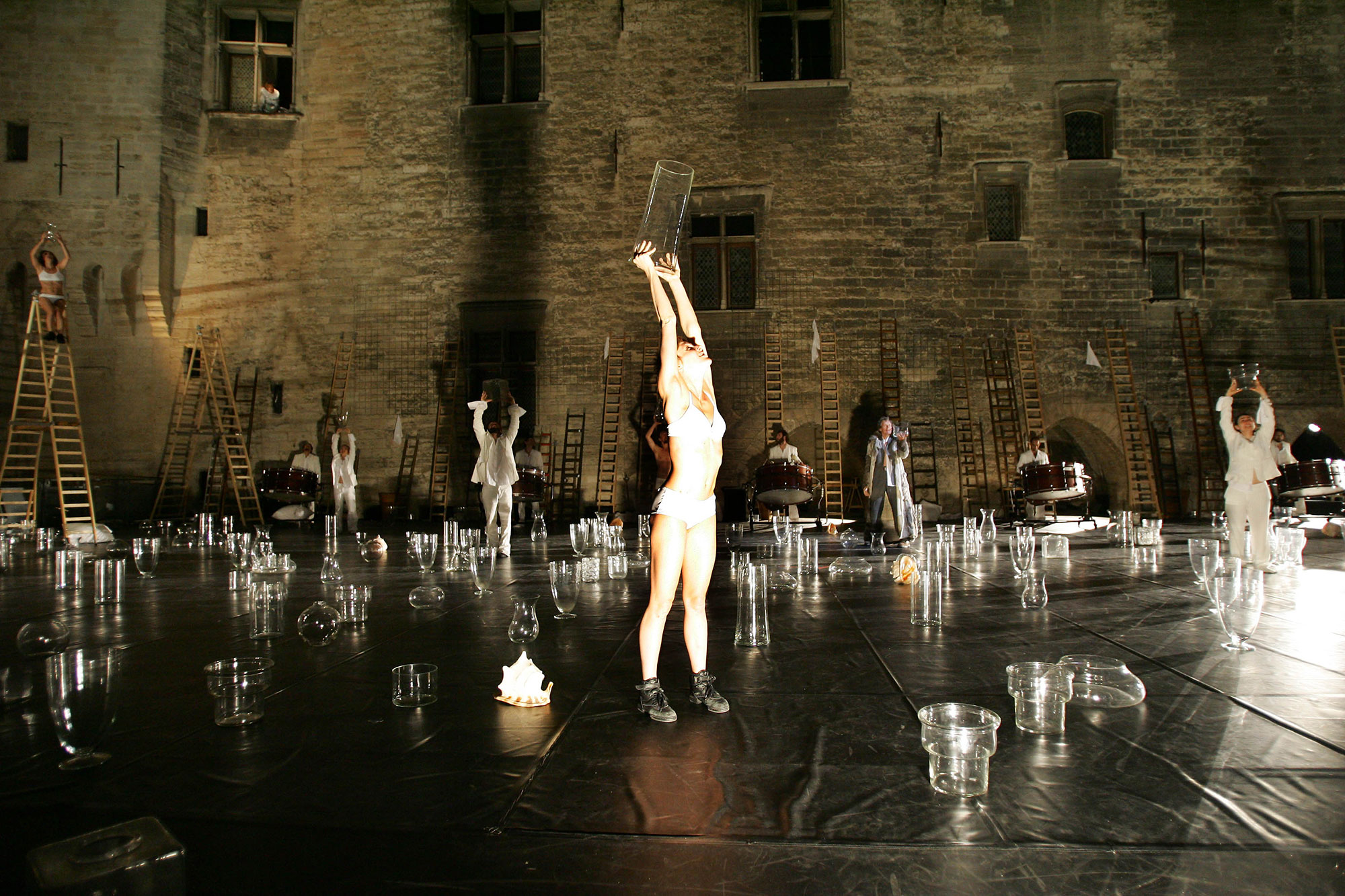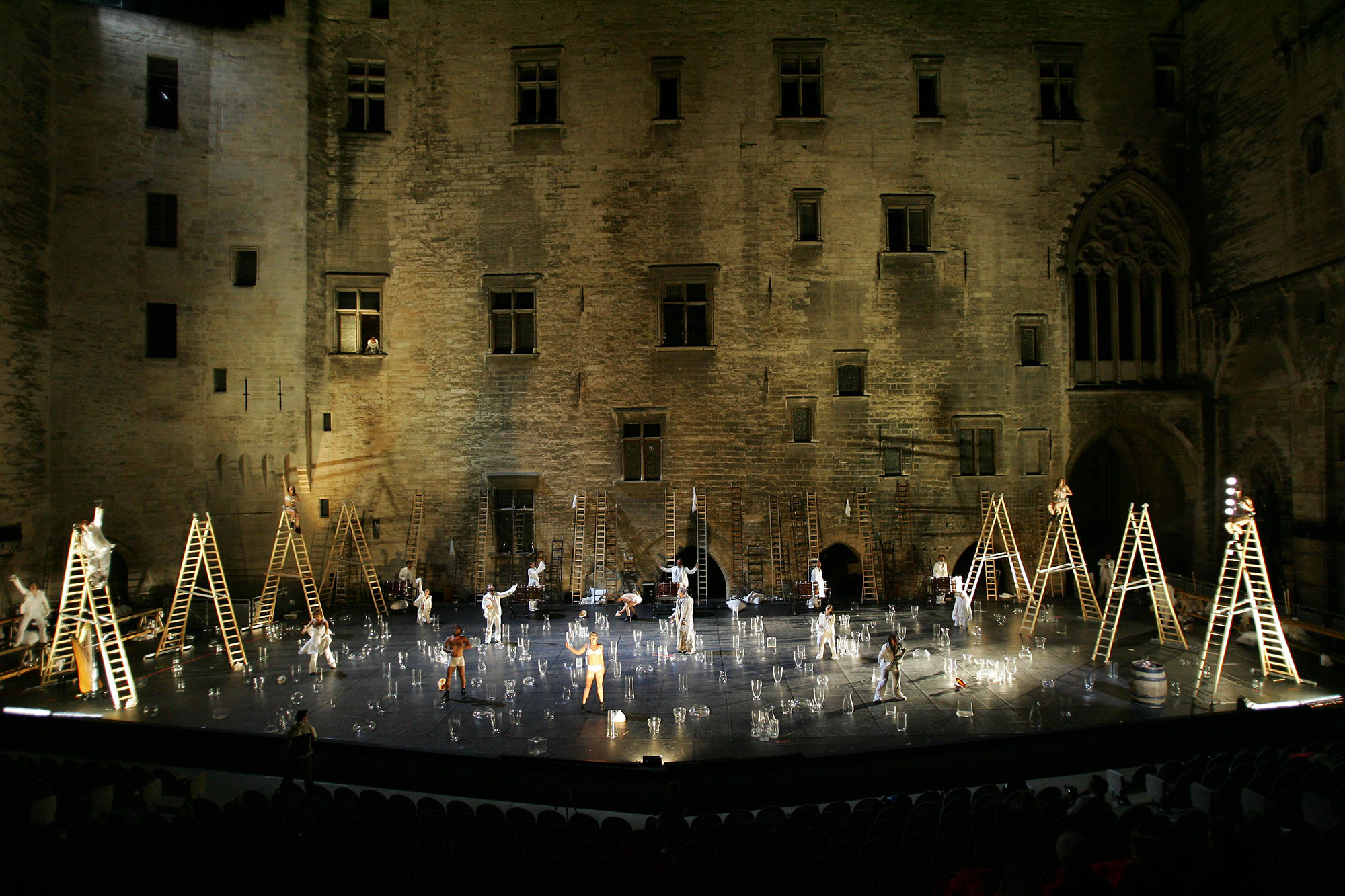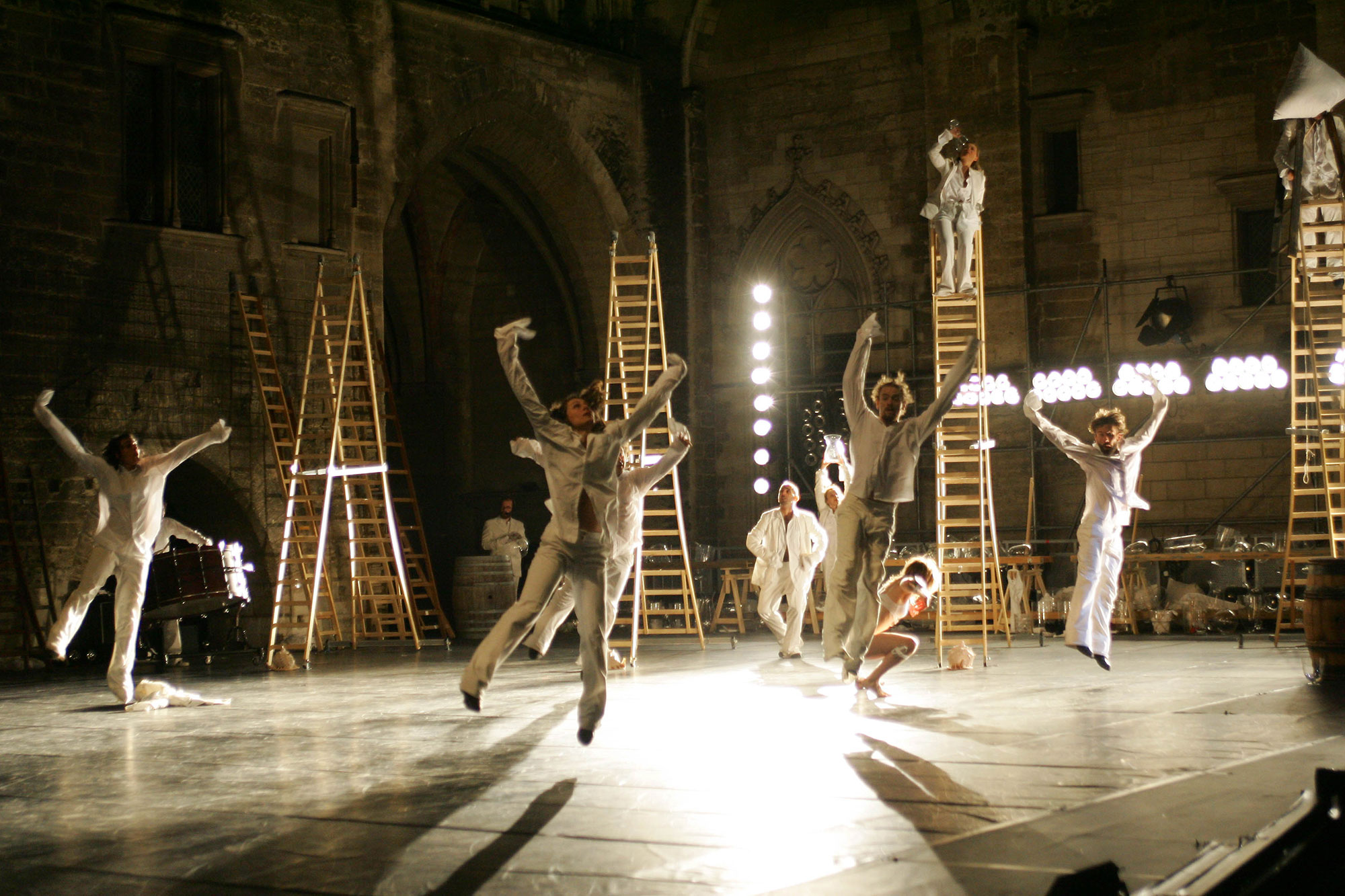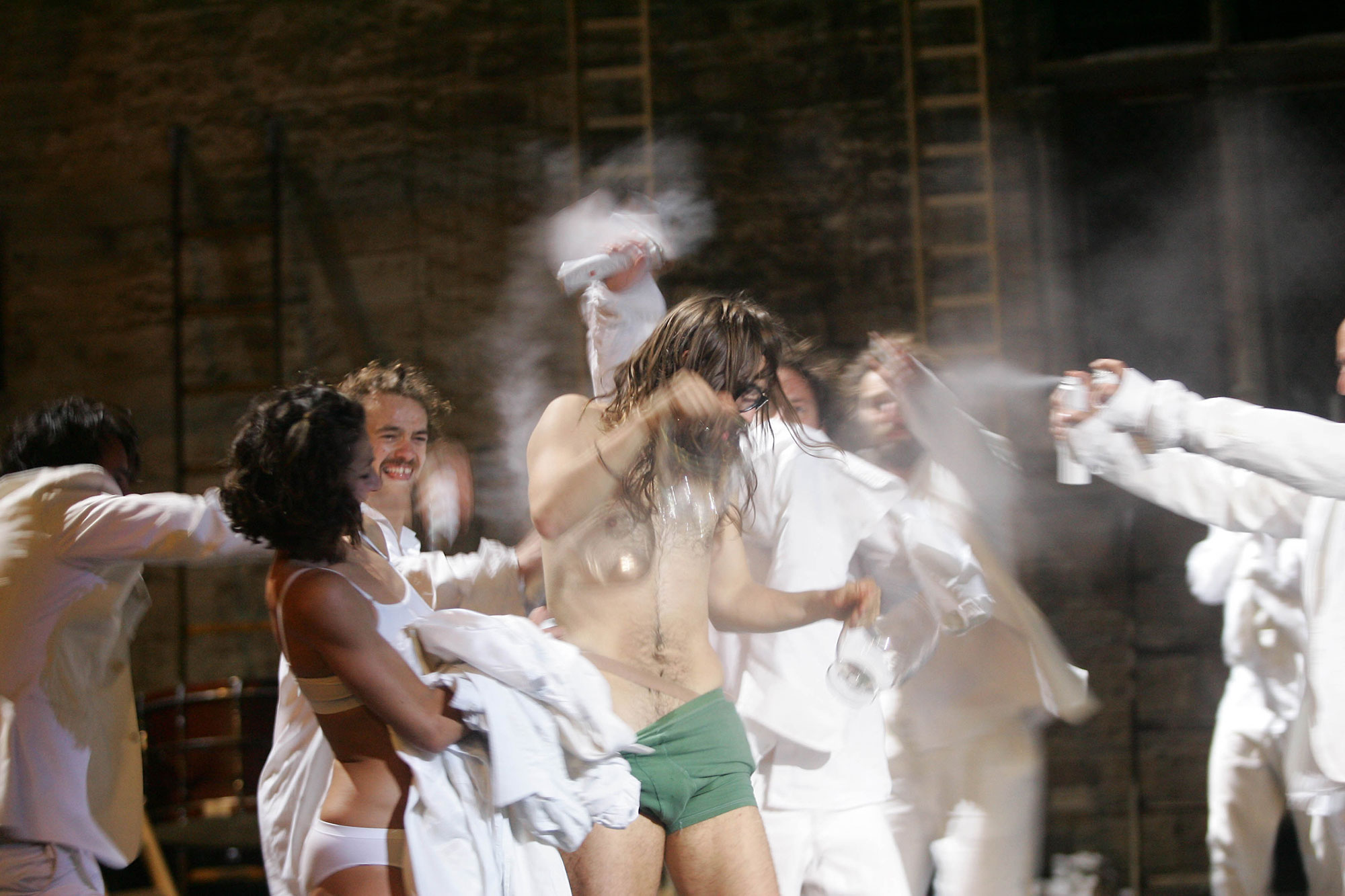
Inspired by Roland Barthes’ question in Fragments d’un discours amoureux, ‘Who will write the history of tears?’, Fabre created a second performance for the Palais des Papes in Avignon. In this performance Fabre focuses on the relationship between water and the human body: water ensures that the body remains fluid and transforms into several corporeal juices. As a consequence water is a vital fluid and the link between the human body and the outside world.
The history of tears focuses on the water in our body which wants to get out (sweat, urine, tears, etc.), but which is unable to, or better yet, not allowed to leave our body. Fabre uses solidified matter, in this case glass, to symbolise tears. After Je suis sang Fabre once again seeks out the taboo of the corporeal fluids which conceal our body’s instincts. That is why the story unfolds against ‘the great draught’: babies who are cast onto dry land wail heart-breakingly, a deafening lament which conceals the sorrow of humanity.
The knight of despair, the play’s main character, celebrates the fluid body because he knows about the power and the beneficial effect of secretions. His battle is a cry for help in a world marked by shame and taboos. Alongside this quixotic figure we also see a dog, in whom we recognise the Greek philosopher Diogenes, in search of the real man who does not deny his nature but instead breaks free from social restraints. At the top of the stage we see another important character, the rock. Once the most fertile of all women, she has been punished by the gods and has been changed into insensitive matter. Like Erasmus Fabre sings the praise of folly: the fools cry with laughter and thus wet the ground making it viable.
Fabre also wishes to paint a picture of our era with this allegorical tale: our era is threatened by draught, by excessive rationality and control. The encroaching desert symbolises the alienation from the natural body.
text, scenography, choreography Jan Fabre original music Eric Sleichim dramaturgy Miet Martens assistance choreography Renée Copraij
actors, dancers, musicians Linda Adami, Marcel Andriessen, Aldo Aranda, Vicente Arlandis, François Beukelaers, Dimitri Brusselmans, Katrien Bruyneel, Annabelle Chambon, Cedric Charron, Anny Czupper, Gael Depauw, Olivier Dubois, Ivana Jozic, Ekaterina Levental, Apostolia Papadamaki, Maria Stamenkovic-Herranz, Geert Vaes, Helmut Van den Meersschaut
light design Jan Dekeyser, Jan Fabre costumes Daphne Kitschen, Jan Fabre
technical direction Harry Cole technicians Jelle Moerman, Jon Bogaert sound The Image & Sound Factory assistant costume Gerda Van Hoof assistant dramaturgy Luk van den Dries, Hendrik Tratsaert production manager Sophie Vanden Broeck
french translation Olivier Taymans
production Troubleyn / Jan Fabre (Antwerp, Belgium) in co-production with Festival d’Avignon (France), Muziektheater Amsterdam (The Netherlands), Hans Christian Andersen 2005 (Denmark), Grand Théâtre de la Ville de Luxembourg (Luxemburg), deSingel (Antwerp, Belgium), Seoul Arts Center (South-Korea), Bl!ndman (Brussels, Belgium), Cankarjev Dom (Ljubljana, Slovenia) and with the support of the European Commission (Culture 2000)
Eric Sleichim is artist in residence at Muziektheater Transparant (Antwerp, Belgium) who financed the composition for « History of tears»
première 08.07.2005, Cour d'Honneur, Palais des Papes, Festival d'Avignon, Avignon
